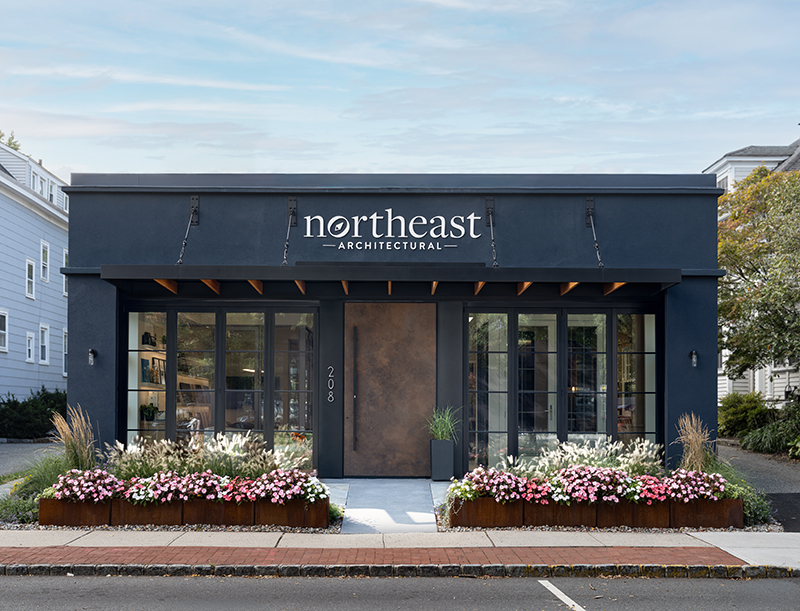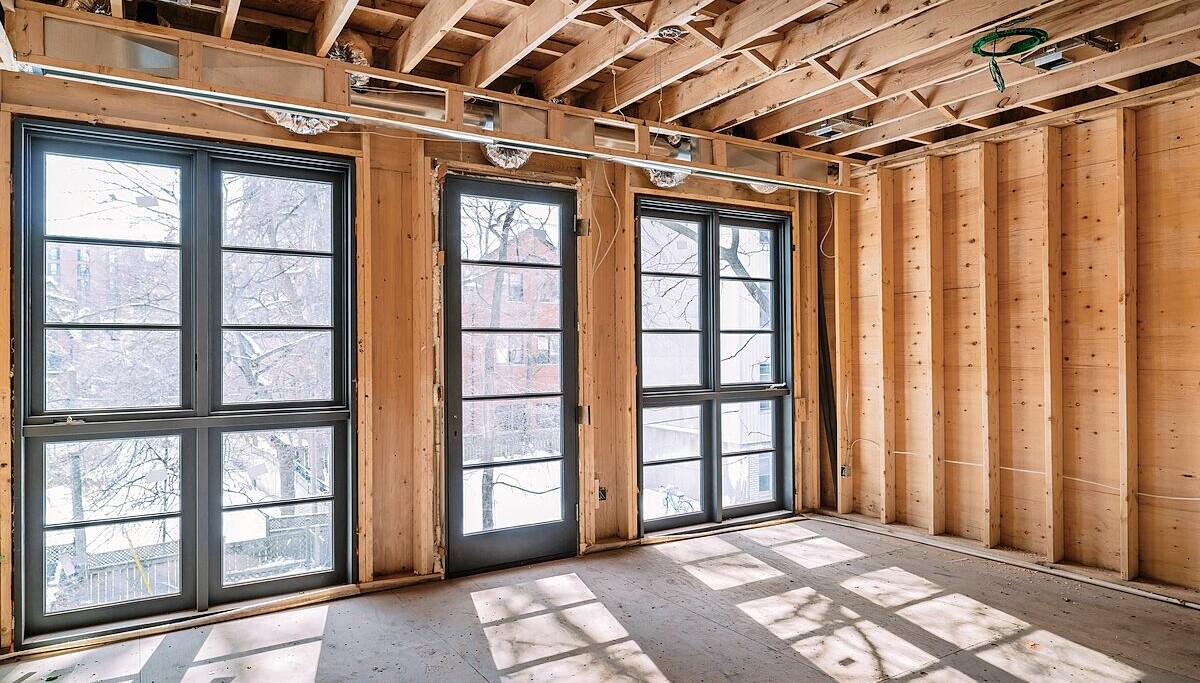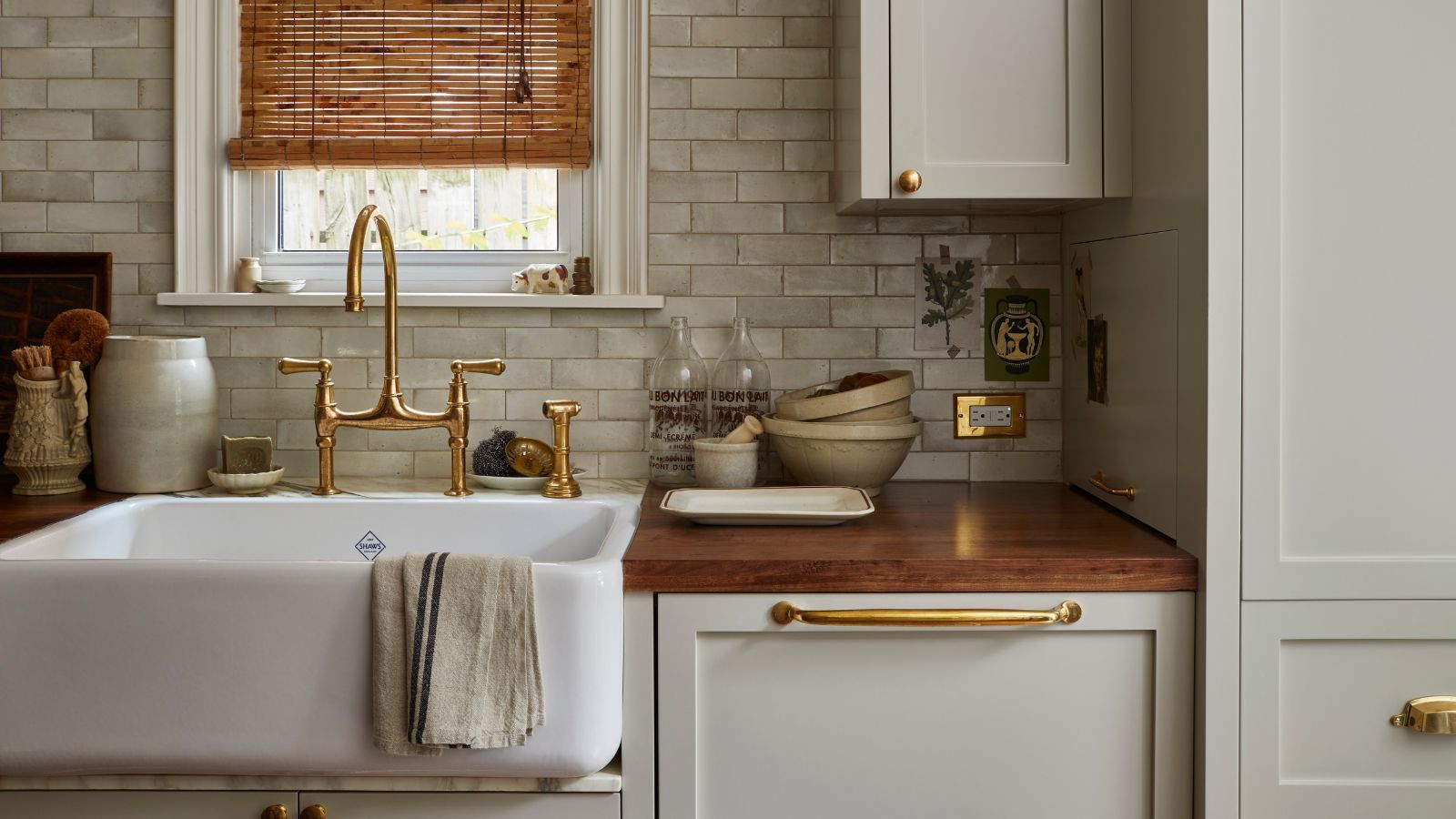Portrait: Finn inspires large number of followers with restoration projects
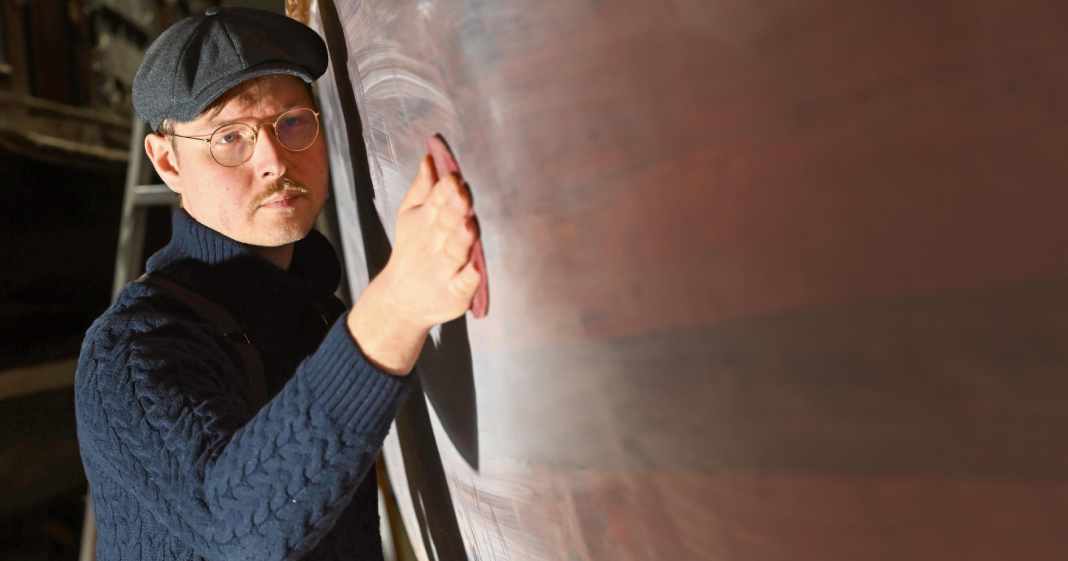
A delicate crackling sound is heard when Jani Vahto heats the lacquered surface of the mahogany deck with a heating coil. Only a few seconds pass and the once hard surface begins to melt like syrup. Small bubbles appear, rapidly increasing in number. But this state is short-lived: with a determined jerk, the young Finn draws a sharp blade across the delicately bubbling surface and reveals another piece of the reddish-brown wood.
Even watching this monotonous, repetitive process is soothing. Heating, bubbling, scratching. Heating, bubbling, scratching. It is satisfying – without you being directly involved. This short clip is one of hundreds of reels – short entertaining video clips – that the young Finn has filmed and posted for his Instagram account.
Also worth reading:
In addition to insights into the typical work involved in traditional boatbuilding, there are also many other impressions from the world of classic boats: shots of elegant metre-class yachts gliding majestically through the Finnish archipelago. Another scene shows a jetty full of wooden classics gleaming freshly varnished in the summer sun. All these impressions are refreshing.
They are like balm for the soul in the incessant stream of short clips that now flood social networks. The videos stand out from the crowd and obviously strike a chord with viewers. Thousands of people like the videos; more than 140,000 people follow the young Finn on Instagram. His account now has “classicboatsfinland” is one of the largest contact points for classic boat enthusiasts – whether for sailing or motor yachts – available on the platform. “All the effort, the love of the craft and the passion – I think you can see that in the videos,” says Vahto. This also appeals to people who actually have little to do with restored boats. “They also recognise the beauty and the special features of these projects.”
Jani Vahto shares classic boat building on Instagram
However, the 32-year-old’s life is not only characterised by old wood and fresh varnish in the digital space. Classic boats take up a large part of his life. A visit to his home quickly reveals this. It is located in Turku, the oldest city in Finland and around two hours’ drive from the capital Helsinki. A warehouse a few kilometres from the city centre is one of several places where some of the treasures are stored. Inconspicuously, on the site of a local gravel works, a handful of wooden classics are stacked close together on an area the size of two tennis courts.
It smells of solvents. Wooden mouldings, screw clamps, boat parts of all kinds, brushes and old paint cans lie on side tables or are stored between the boats. Polished brass parts are lined up on multi-storey iron shelves. Cleats, doorknobs, brackets for flagpoles or curtain poles. The hull of one of the boats is masked off, with a tarpaulin underneath. The surface of the planks has an oily sheen. “Just don’t touch it, it makes a hell of a mess!” says Vahto, explaining that the wood is impregnated with a special tincture to make it water-resistant.
An almost hundred-year-old saloon yacht is still waiting to be restored. The paint is peeling, the wood looks pale, the hull exhausted. Parts of the superstructure have already been dismantled. Floorboards, instruments and the steering wheel are missing. Here, among all the boats, components and paint cans, is the centre of the 32-year-old’s life. Together with his father, Esko Vahto, he collects and restores old wooden boats. They currently have around 20 boats, including saloon yachts from the 1920s and 1930s and a day cruiser from the 1950s, which they are gradually bringing back to life.
Fascination for classics was born in the cradle
It is his father from whom he inherited his fascination for old boats. He is an engine mechanic and passionate boat enthusiast. Forty years ago, he began rescuing old wooden boats from the campfire and restoring them. He sold some of them, while he has kept others to this day.
“Bonito”: a legend returns
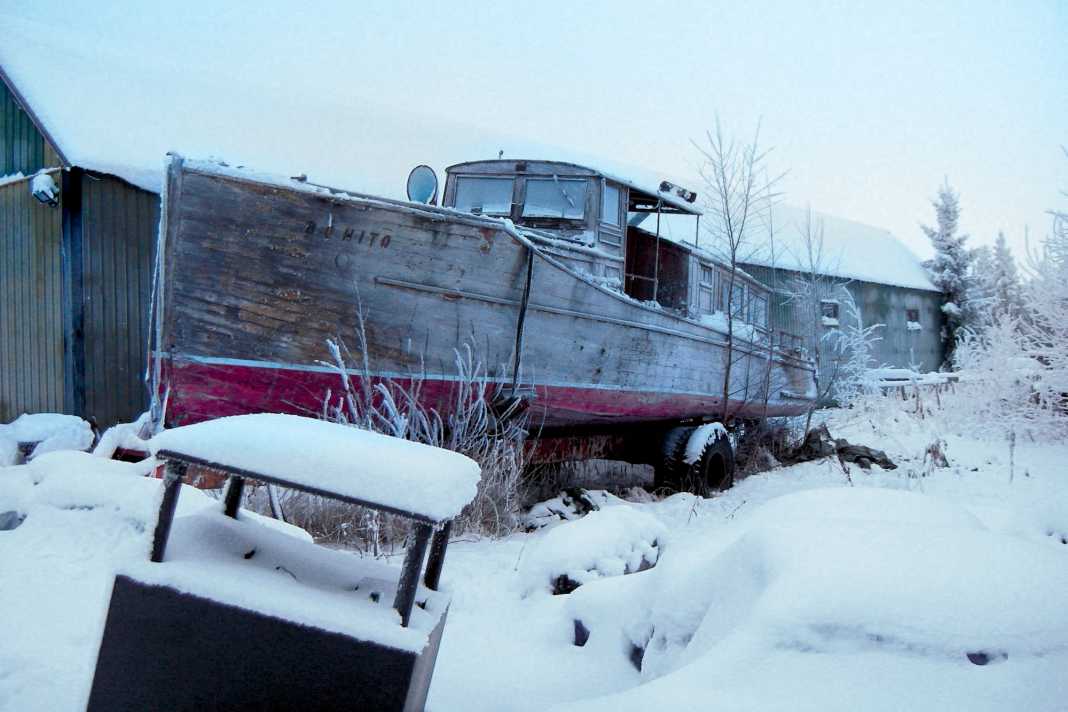
Photo: Archiv Jani Vahto
After years of searching, the over 100-year-old “Bonito” was rediscovered. Since then, Esko and Jani Vahto have dedicated themselves to restoring this example of Finnish boatbuilding tradition.
When Jani was born in 1992, the family already owned several vintage cars. Among them was a so-called Sikari boat, a prototype of a torpedo-shaped wooden racing boat built in 1929. “I grew up with these special vehicles and their stories,” says Jani Vahto. His father repeatedly told him the stories of the boats that had fascinated him since his childhood and finally sparked his interest.
Many of their boats date back to before the Second World War. They have changed hands many times and yet have survived the decades. Like the saloon yacht, whose hull is soaked in wood oil. “These boats, which were once built in Finland, are of outstanding quality.” The philosophy behind them is something special, says Vahto.
It is above all the details and the aesthetics of the designs that fascinate him about the traditionally built boats: “In the past, more emphasis was placed on beauty. You can see that when you walk through old towns, for example. Many of the buildings are pure works of art.” Boats that were built after the war don’t have these characteristics, Vahto believes. Fast and cheap were more important; the attention to detail was lost. “I think people would be happier if they surrounded themselves with more beauty again.”
Many boats come from the Finnish Åbo Båtvarf
In addition to their long history, many of the boats at Vahtos have another feature in common: they were built at the renowned Åbo Båtvarf in Turku, once the largest shipyard in the Nordic countries. Between 1889 and 1954, around 5,000 boats were launched there, including numerous 8-metre yachts by well-known designers. “I would love to relive how boats were once built there. How the owners met with the shipyard owners, designers and boat builders and designed new boats.” By restoring his classics, Vahto hopes to get closer to this idea: “I think an old boat is the best time machine we have so far.”
Today, the site of the former Åbo Båtvarf is a popular restaurant, concert and event location as well as a central meeting point for the local classic yacht scene. Classic yachts are still restored and stored on part of the site. It is also the place where the young Finn got to know sailing and boarded an 8-metre yacht for the first time. “I’ve been obsessed ever since,” says Vahto. A year ago, he bought a 7-metre yacht from 1910, which has been languishing on an island in the archipelago. He also wants to breathe new life into it in due course.
In the small hall on the edge of Turku, where the Vahtos store their boats, there is a piece of local history – a history that Jani Vahto wants to preserve in his own way. Because, as he says, craftsmanship is not his thing.
“My father and all the boat builders are talented with their hands. I can’t say that about myself.” Instead, he opted for a different form of expression. The initial spark for this came when he was given a camera at the age of 15. He began using it to accompany his father as he worked on the boats. He took photographs and wrote articles. He later published his own wooden boat blog. He visited boat shows and festivals, reported on every single boat and got in touch with people from the Finnish classic boat scene.
“With the pictures and articles, I was able to tell the stories of the people and their boats,” says Vahto. “My father is the mechanic genius. I’m the one who finds the stories. That’s how I motivate people and bring them together.”
“I think people would be happier if they surrounded themselves with more beauty again.”
The blog developed into an Instagram account. In the beginning, Vahto only posted a few photos, but several thousand users followed him. When reels – a more entertaining video format on the platform – were introduced, he was finally able to share the countless videos that had been stored on his hard drives for years. “And suddenly the account exploded. Hundreds of followers were added every day. It was incredible!” he says.
Mahogany saloon yacht “Bonito” is a project close to the heart
One recurring theme in particular captivated the audience and provided a very special insight into the golden era of Finnish yacht building: the story of the long-lost saloon yacht “Bonito”, a prominent twelve-metre-long mahogany beauty built in the Turku shipyard in 1921.
It’s one of those stories that Jani’s father has been telling him since childhood and that has stayed with him ever since. Esko Vahto knew “Bonito” from the seventies. He first tried to buy the ship in Jyväskylä at the end of the 1980s. But the owner at the time, Pekka Salonen, did not want to sell. A few years later, Vahto learnt that “Bonito” had changed hands after all – and so began a veritable odyssey. But despite an intensive search, the boat remained missing for years.
The turning point came in 2008, when an elderly lady happened to visit a hall where the Vahtos were storing some of their boats. She casually mentioned that her son owned an old wooden boat. However, it was in such poor condition that it was ripe for the midsummer bonfire. When Esko Vahto asked the lady for her name and was told “Bonito”, a cold shiver ran down his spine. It was her – the long-sought yacht had finally been found.
“Bonito” cultural heritage site undergoes extensive restoration
During the first survey in Somero, the “Bonito” was in a deplorable condition. Of 112 frames, 92 were broken and the keel had to be completely replaced. However, despite the massive damage, the boat had remained largely original and without any modifications to the original design. Most of the fittings were also still in place.
In spring 2009, father and son transported the “Bonito” to their workshop in Turku for an inventory. This revealed that the restoration would be too extensive to be carried out on the side. External help was needed. Fortunately, the Finnish Cultural Heritage Agency approved a restoration grant for the Bonito in 2017. In September of the same year, she was moved to the workshop of Forum Marinum, the official Finnish Maritime and Naval Museum in the heart of Turku.
With the support of boat builder Juha Suorsa, the boat was first dismantled into its individual parts and then reassembled. Among other things, the keel had to be completely renewed and a large part of the mahogany planks had to be replaced. Finding the right wood for the keel was particularly difficult, says Esko Vahto. Two further government grants were received so that the project could continue.
“I think an old wooden boat is the best time machine you can imagine.”
At the same time, Jani Vahto went in search of clues from previous owners. Because “Bonito” had changed hands several times. It was often in the hands of wealthy Turku citizens, including the brother of the former Finnish Prime Minister and the owner of a local bicycle factory. It always attracted attention and became a celebrity in its own right.
Jani Vahto financially supports project with social media activities
Vahto began to collect all the pictures and stories he could get hold of. He invited the granddaughter of a previous owner to the launching. When the boat is finished, she said, she would look in the attic for the tablecloth that still has the boat’s name embroidered on it. “Moments like that touch me. It’s like becoming part of the families and being able to give a piece back,” says Jani Vahto.
However, the project also has its downsides. Jani Vahto was constantly looking for funds for the restoration, as the project devours a lot of money. Several hundred thousand euros have now been invested in the boat. “It’s blood, sweat and also nightmares that we are investing in our dream.” Loans that he has taken out, trips that he has sold in advance and small collaborations via his Instagram account keep the project running alongside government funding. “Every single penny goes into the boat,” he says. But it goes on and on; even burnout, which brought Jani Vahto to his knees for a time, didn’t stop them.
Not much is missing now. The last of around eleven coats of paint is imminent. Slightly sanded, with a milky surface, “Bonito” awaits its final coat in the centre of the small warehouse. The upholstery, the interior and the windows also still have to be fitted. A carpenter is currently making the galley fittings. In the summer, it should finally be possible to bring “Bonito” back into the water with a little delay. Then, Vahto hopes, his presence on Instagram will help him and his efforts will pay off.
He plans to use his reach to advertise charter tours. Instead of painting and sanding, the shiny new “Bonito” will adorn his account and glide elegantly through the waters of Turku. The aim is to revive the boat’s former reputation. “I want people to recognise the boat – like they used to!”
link



